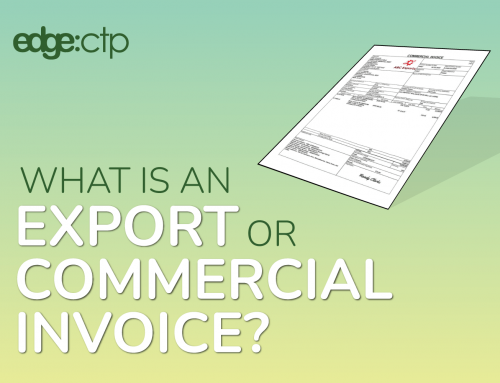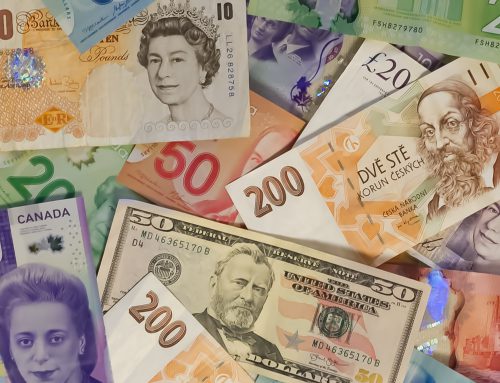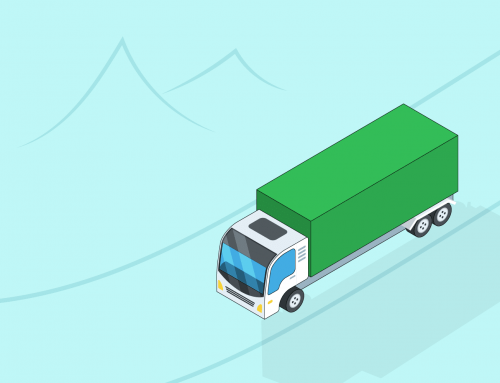I’m Geoff Runcie and at the start of 2015, I was lucky enough to be involved in a series of sessions with the International Trade expert, Murdo Beaton. We were accompanied by Abdul Mann, whose team has built a range of international trade solutions under the brand EDGE. Abdul helped to explore some of the ideas Murdo presented in his answers about the process of delivering goods.
Today you’ll hear one of ten questions presented to Murdo, but if you want access to the entire session or future sessions, there is a link at the end of this blog. Alternatively, feel free to drop me an email on Support or visit our Blog.
A full transcript of this session has been provided below.
Geoff:
Today I’d like to ask, what is the process of delivering goods overseas?
Murdo:
The physical exercise of moving products from A to B in the global market does entail certain procedures that we have to deal with. Service is a different exercise because there is no physical delivery of the service, which to a grey degree is an intangible entity, but that doesn’t deny the fact that service is still required to be delivered. Normally we find that service delivery is when the service is actually consumed by the party who has actually requested it. On the consumption of that service, one would say that the service has now been delivered. Normally that service has to be taken to the customer, or that customer has to come to the provider’s premises to consume the service. But for service, consumption is synonymous with the delivery of it.
(Scroll down to continue….)
When it comes to tangible products, this is more of a physical exercise where goods have to move through different transport modes. They have to go from the exporter’s premises to the port or airport of exit. They then have to travel to the main entry port or the main airport in the market of destination. They then have to travel from that entry point to the premises of the buyer or the intermediary that we have included in our business model. Now, we also have to be aware of the fact that when we move goods in the physical mode from A to B, we do so under what’s called Contract of Carriage, which we mentioned earlier with regards to one of the previous questions. These are contracts that we entered into with the carrier, if we, the exporter, are responsible for the process of delivery goods
We also have to make sure that on leaving the UK market, the UK shores, and the UK exit point, that the goods are declared to our own Customs Authorities. Now, this is for no major reason other than that, for most cases anyway, 90% of cases, it’s purely for statistical purposes. We are just simply recording that these goods are leaving the UK to go to a foreign market. There are some instances where we might be exporting goods in which, Customs might have a particular interest because they are under some form of regulatory control and Customs have to make sure they approve their export or are aware of their export at a particular time.
So we have to make sure we deal with that issue when we are exporting the goods, and that we also have the proper Contract of Carriage in place with the carrier that is taking the goods from our own market to the destination market. Where on their arrival, they have to go through the process of being approved by the Customs Authority of the receiving market. After being approved and released by that authority, on the payment of any duty or taxes then, they would be free to be delivered to the actual customer
Abdul:
This touches upon one thing that they call Delivery Terms or Incoterms 2010, and these are things that you would agree to upfront with your buyer. I’d assume at the quotation stage or when they’re agreeing on the delivery of the goods and so forth. Could we touch upon what an Incoterm is and how it’s important in the whole scheme of things, especially on the delivery of goods?
Murdo:
Yes, International Commercial Terms as they are known, commonly called Incoterms. Now they are fundamental to every international transaction where a physical product is involved. The Incoterm determines exactly the responsibility of both the buyer and the supplier, the exporter, and the buyer. There are a number of Incoterms that can be used in the transaction but whichever Incoterm is selected will determine who pays for what in the physical logistics of the transportation and who is responsible for producing what documents.
So each Incoterm lays out exactly where there is a responsibility for the exporter to pay up to, and where there is a responsibility for the buyer to pay from. Now when we talk about the delivery of the goods we know it is a single delivery channel from A to B, but the buyer and seller can meet somewhere within that channel and exchange responsibilities. Vis a vie, the buyer will take over the responsibility of the goods while they are still in transit as it were, and the exporter will surrender any interest in the goods, even before they are actually delivered to the buyer’s premises.
Whatever the case might be will be determined by the Incoterm that is actually selected. We probably will be taking about Incoterms later as they are of such huge importance in an international transaction but yes of course, for the process of delivering goods, Incoterms do play a very, very major role.
Geoff:
I hope you enjoyed this audio. If you’d like more information on international trade, go to www.edgectp.com.





